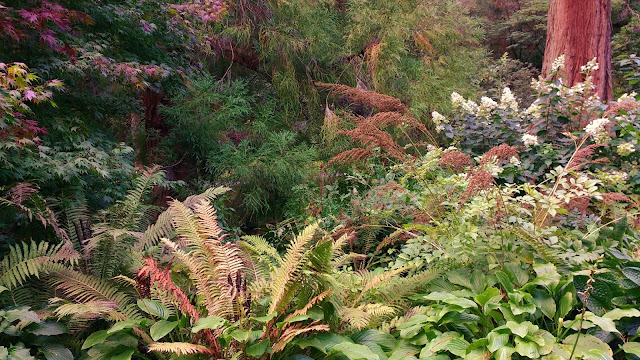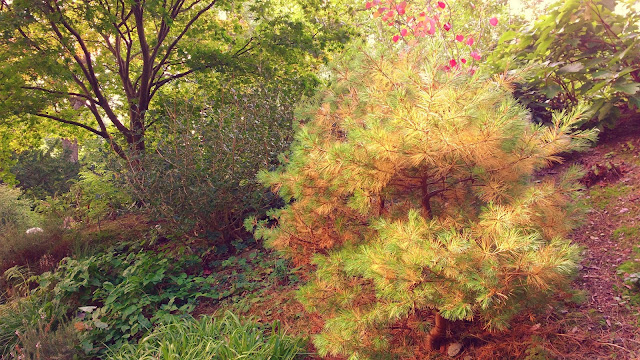With the British voting to leave the European Union this year and the United States imploding politically, it's clearer today more than ever how different - how
divided - we are as a race. There's been so much mistrust and so much anger. As this stormy year reaches its end, however, an oasis of common ground has emerged. Ten years ago, naturalist and broadcaster Sir David Attenborough brought to the nation his most astounding television series: 'Planet Earth'. It revealed scenes of wild species and their behaviour from the highest peaks and the deepest jungles which most humans had never seen before. Now in 2016 'Planet Earth II' has come. Ten years of further developments in science and technology have meant even more breathtakingly special stories from nature recorded on camera. The once-familiar thud of my awestruck jaw hitting the floor on a Sunday evening has returned. Best of all, from what I've heard from social networks and conversations it seems that regardless of our societal and political divisions, its a thud echoed across millions of homes worldwide.
There have been three episodes of this series so far, and each has completely inspired me. The scenes of jungle fauna yesterday were too stunning for me not to place them here, on the blog, for me to return to and continue gazing.
 |
| "Cloud-breathing" |
“They cover less than six percent of the earth’s surface but
they are home to half of all the plants and animals on land. Jungles have just
the right amount of light, water, and nutrients, and they have had - every day
- for millennia.”


“Everything in the jungle has to compete for space. Only 2%
of the sun’s rays reach the ground, so even the plants must battle for the
light they need if they’re to grow. 300 years ago, this Hura tree began its
race for light. And every day since, it has absorbed the light and water it
needed to grow into a giant. It has succeeded in doing what every tree must do
to survive… rise above the gloom of the jungle floor. And what is more, its
success has given life to others. Its branches now carry a thousand other
plants. These particular ferns, figs, and orchids live only on the branches of
other trees. A thousand plants growing on one single tree. Throughout the
forest, this story is repeated endless times. As a consequence jungles are home
to more species of plants than anywhere else on earth, and they in turn support
a wealth of animals.”


“In some jungles it rains so much that for part of the year
the trees are almost totally submerged - the forest floor is thirty feet below
the water’s surface. This is a mysterious world, a place few people have
explored. We have much to discover about the animals for which this is home…
including some you might never to expect to find amongst trees. Here, a
thousand miles from the sea, are dolphins.”

“For the coming of the night, a new cast of jungle
characters takes to the stage. Fungi unlike plants thrive in the darkness of
the forest floor. They’re hidden until they begin to develop the incredible
structures with which they reproduce. Each releases millions of microscopic
spores which drift invisibly away. Many have fruiting bodies which reach
upwards to catch any feeble current there might be in the clammy air. But some
become luminous. Why fungi light up has remained a mystery - until now.
Scientists studying the brightest fungi in the world think they might have an
answer. Like a beacon the light attracts insects from far and wide… [which -
like bees and pollen - the fungi use to spread their spores.]”




 Anyone who has
set foot into Bodnant Garden knows that it’s a very special place. You don’t
need to have a blog on horticulture or fluency in botanical Latin, anyone I’ve
met who has been there knows it. It is spectacularly beautiful, and I shall
always count myself blessed for having had the chance to pop along as a
volunteer gardener three years ago, when I first got started. Bodnant was the
first experience I wrote about on the blog, in December 2013, and I was there
every week until the RHS invited me down to Essex the following summer. I hold
the garden in the highest esteem, and I have been there through winter, spring,
and summer - yet for all the drifts of daffodils I have seen, the azaleas in
flower and the laburnum arch dripping with yellow, it is only now that I have
been there in autumn.
Anyone who has
set foot into Bodnant Garden knows that it’s a very special place. You don’t
need to have a blog on horticulture or fluency in botanical Latin, anyone I’ve
met who has been there knows it. It is spectacularly beautiful, and I shall
always count myself blessed for having had the chance to pop along as a
volunteer gardener three years ago, when I first got started. Bodnant was the
first experience I wrote about on the blog, in December 2013, and I was there
every week until the RHS invited me down to Essex the following summer. I hold
the garden in the highest esteem, and I have been there through winter, spring,
and summer - yet for all the drifts of daffodils I have seen, the azaleas in
flower and the laburnum arch dripping with yellow, it is only now that I have
been there in autumn.




 Although it's not unusual for 18th century parkland to come with a folly, Castlewellan's Moorish-inspired tower is absolutely unique. With countless little ferns growing between the brickwork, it has been "Irishised" rather nicely, and the gracefully-shaped windows are marvellous for gazing out on to the forest's canopy. We found it on our second lap of the lake, following as many paths as we could and remaining until it was quite dark.
Although it's not unusual for 18th century parkland to come with a folly, Castlewellan's Moorish-inspired tower is absolutely unique. With countless little ferns growing between the brickwork, it has been "Irishised" rather nicely, and the gracefully-shaped windows are marvellous for gazing out on to the forest's canopy. We found it on our second lap of the lake, following as many paths as we could and remaining until it was quite dark. Irish novelist Forrest Reid, Apostate (1926): "When I was about six or seven I used to be taken out each morning by my nurse, Emma, to the Botanic Gardens, at that time not yet transformed into a public park. There was a large conservatory there, and the wing of the building where the palms and cactus grew had a glass door bordered with red and yellow panes. On chilly October days I was very fond of flattening my nose against one of these coloured windows, and peering out into an exotic world. What I saw then, in spite of the familiar shape and position of each tree and shrub, was not the Botanic Gardens at all, but a tropical landscape, luxuriant and gorgeous. The damp warmth of the greenhouse atmosphere, the moist earthy smell of the ferns and creepers and mosses growing there, helped to deepen the illusion that I was far away in the virgin forest."
Irish novelist Forrest Reid, Apostate (1926): "When I was about six or seven I used to be taken out each morning by my nurse, Emma, to the Botanic Gardens, at that time not yet transformed into a public park. There was a large conservatory there, and the wing of the building where the palms and cactus grew had a glass door bordered with red and yellow panes. On chilly October days I was very fond of flattening my nose against one of these coloured windows, and peering out into an exotic world. What I saw then, in spite of the familiar shape and position of each tree and shrub, was not the Botanic Gardens at all, but a tropical landscape, luxuriant and gorgeous. The damp warmth of the greenhouse atmosphere, the moist earthy smell of the ferns and creepers and mosses growing there, helped to deepen the illusion that I was far away in the virgin forest."